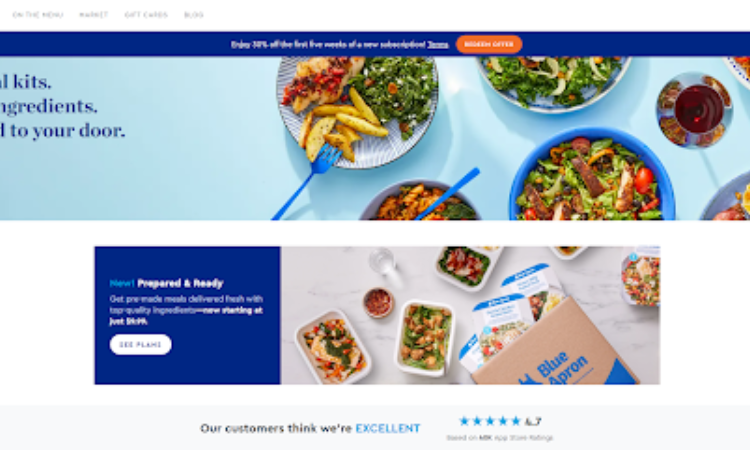

In the age of digital marketing, a successful lead magnet funnel is a sure way to expand a brand’s existing audience, build trust by offering value, and develop customer loyalty and relationships. Although there are many different ways to implement a lead magnet funnel, it’s important to choose the one that’s right for your business or community. Our guide will walk you through how.
A lead magnet is a product or service offered by a brand with the intention of acquiring a potential customer’s details, such as their name, email address, and/or phone number. Lead magnets are often used to add customers to an email list so the brand can send them tailored marketing that will provide additional value, build trust, or convince them to purchase.
Brands can take advantage of hundreds of different lead magnets, depending on their niche. Most of them come in the form of digital products that companies can make once and reuse over and over again. Here are just a few examples:

When used in marketing, a funnel is a clear, concise, and effective way to map your customer’s journey, helping you identify points where they might engage with your products or make a purchase.
The marketing funnel maps customers from the “awareness” stage, where they are just discovering the brand, all the way to “loyalty.” The goal is to keep the customer in the funnel as long as possible, inspiring trust and brand loyalty at every stage.
There are five stages of the marketing funnel:
By harnessing each stage, companies and brands can turn those unfamiliar with their products or communities into lifelong advocates.
Looking to set up your own community? Teach.io’s all-in-one platform has everything you need to get started.
The #1 to make money online with TikTok Search (FREE TRAINING)

A lead magnet funnel (also known as a lead generation funnel) is designed to convince potential customers to hand over their contact details, thus turning into “leads.” Russell Brunson popularized the idea of the lead magnet funnel, having co-founded the software company ClickFunnels. He’s built a following of over a million entrepreneurs who use his strategies to catapult their businesses to success. This is proof that the lead magnet works when used correctly.
Once customers sign up for your free trial or eBook, they enter the lead magnet funnel and begin their journey. From there, you can upsell your other products. If you have a successful lead magnet funnel in place, leads should be happy with the value you’ve provided them but left wanting more.
Lead magnet funnels are essential not only for converting prospects into customers but also for increasing CLV (customer lifetime value). By integrating potential customers into your email list or community, you can continue providing them with value in the form of articles, tips, eBooks, video content, or whatever else suits your brand. This will encourage additional purchases and inspire brand loyalty, making them feel like part of a community.
Although lead magnets are effective, choosing the right one is imperative to helping your business grow and thrive. Here are a few examples of successful lead magnets you can implement into your own funnel.
Although an online course may feel like a big offering, you can tailor content to suit you. Filming a one-off course is a great way to show your audience that you’re dedicated to providing value for them. You get to choose the course length – whether it’s three videos or six.
An eBook is a fantastic way to provide value and draw in the right audience. Create an eBook on any topic that links to your niche. For example, if your company sells knitting supplies, an eBook that features basic patterns is a great idea. Once your leads have mastered those, they’ll be on the hunt for better, more technical patterns, which you can provide further down the funnel.
Checklists, planners, and calendars are fantastic lead magnets, as you can use an existing template and personalize it for your niche. For example, a grocery checklist would be a great lead magnet idea for an organic food company.
Although there are many lead magnet funnel examples you could adopt for a group coaching business, you need something that will convert. Here are a few examples:
Quizzes are great lead magnet options for coaching businesses because they resonate with topics that your audience is interested in. For example, if you’re a wellness and mindful coach, your quiz could be centered on mental health and anxiety. At the end of the quiz, ask them to input their information so you can send them the results. This is a quick, easy, and successful way to build your email list.
From walking and step challenges to fitness challenges, these are a fantastic way to draw in your audience. For example, you might challenge people to complete 10,000 steps daily or drink a certain amount of water. Wellness challenges could include writing in a gratitude journal for a month or practicing daily affirmations. Whatever your coaching niche, a challenge will inspire potential clients. Ask participants to sign up with their email address to receive the information they need. From then, you can keep providing value.
Whether you offer tailored fitness plans, mental health advice, business advice, or something else, a free consultation is another great way to provide value and draw new customers in. With a consultation, you can draw attention to specific benefits of your company and highlight areas in your client’s life where they would benefit from your coaching services.
A free consultation puts the power in your client’s hands while also educating them about your company. Not only do you have their contact details, but you also have an opportunity to sell your business right from the get-go.

Before you come up with a lead magnet, it’s important to have a good understanding of who your audience is. This way, you can design a lead magnet that they’ll resonate with. To understand your audience, you need to research them and discover their pain points (the emotions that make them want to purchase your product.) Some methods of research include:
Create an exhaustive list of all the products and services your business currently offers and split them into different categories based on their value and price points. For example, if you offer a wedding planning service, separate the different packages you offer, such as consultations, catering, invitations, venue planning, and more.
You need a range of different offerings that will cater to different stages of the customer journey. A customer may not be prepared to jump straight into purchasing an entire service, but they may be more inclined to dip their toe into smaller packages and deals until they trust you fully.
Once you’ve got a good grasp of your audience and you’ve outlined your products or services, it’s time to structure your lead magnet. Here are a few tips for deciding on an effective and engaging lead magnet:
An effective landing page needs to appeal to your audience and increase conversions. It should be clear, simple, and highlight all your benefits.

[Source: BlueApron landing page.]
Here are some key components that make up a good landing page:
Creating an effective landing page doesn’t have to be a chore, thanks to the range of tools and platforms available. Some popular tools for building landing pages include SquareSpace, ConvertKit, Kajabi, and Zapier. Teach.io also lets you build landing pages on their platform so you can convert the right prospects into customers.
Once you’ve created your landing page, optimize it to ensure it appeals to your customers. Conduct A/B tests with specific elements such as call-to-action buttons, images, colors, copy, and headings. This will help you develop a clearer understanding of what potential customers resonate with. In the end, you’ll be left with a strong landing page that converts effectively.
The #1 to make money online with TikTok Search (FREE TRAINING)

SEO is important for getting eyes on your website and directing customers to your lead magnet. Here are a few things you can do to help master SEO.
Paid advertising can direct traffic to your landing page and your lead magnet. Try PPC advertising, retargeting, and social media ads. Instagram, Facebook, and YouTube offer ways to market your business and push potential leads to your website.

Social media is a great way to share content and increase visibility. By sharing valuable content such as tips, tricks, articles, user-generated content, or even information about your brand, you can attract your target audience. This will help you build up a community on Instagram, X, Facebook, or anywhere else you post. From there, advertise your lead magnet and direct organic traffic to your landing page.
Once you’re successfully driving traffic to your landing page, you can start testing your lead magnet to see what resonates the most with your audience. Consistent testing will help you optimize your lead magnet and increase conversions. Test different aspects of your lead magnet, such as colors, content, and length, to see which your audience prefers.
For example, you could test two eBooks with different topics or a five-minute video vs a fifteen-minute video. If your lead magnet is a calendar or organizer, test colors and formatting to see what resonates the most.
Implementing a well-thought-out lead magnet can set your business soaring. Once you have a good lead magnet, ask for feedback on the product or service. For example, if you offer a free consultation, ask your clients about their experience. If their feedback is positive, include quotes on your website. Over time, you will generate more testimonials and customer success stories, which will help you build trust in new leads. When your customers trust you enough and are happy with the value you have already provided, they are more likely to buy your other products.
From then on, you can expand your lead magnet funnel. Once customers have joined your email list or are part of your community, you can offer deals further down the line on additional products or services. For example, if your lead magnet is a free SEO webinar, offer paid videos. Offering subscription services at discounted prices will also help you expand your funnel, keep your audience engaged, and turn them into customers for life.
Teach.io is an all-in-one platform for brands and teachers looking to create a community. Teach eliminates the need for app jumping, keeping everything community leaders need in one place, from one-to-one messages to text posts, video content, and live events. Try their 14-day free trial and watch your community take off.
If you want your business to soar, implementing a lead magnet funnel is essential. As this article has outlined, lead magnets are the perfect way to introduce new eyes to your brand, provide value, build trust, and inspire brand loyalty. The right lead magnet can turn a member of your audience into a paying customer – all you need is the tools and strategies to put it into action. From there, watch your business grow.





